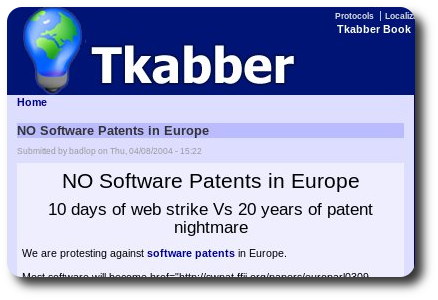

OUR core concern (and original concern) about the EPO was its growing lenience on and friendliness towards software patents, contrary to the EPC (on the basis of which the EPO exists). A patent system without quality control/assurance is bound to collapse, devaluing all the patents it ever granted.
Mike you ask what we the readers think, on the issue whether the EPO is more permissive on patent eligibility than the USPTO.
Well, given that the EPC, Art 52, is more restrictive on eligibility than Section 101 of the US patent statute, it certainly would be interesting, if it were indeed the case. Me, I am sceptical that Europe really is more permissive on business method eligibility than the USA.
Mike, I suggest to you and other readers that an important factor in the USPTO's current strictness on eligibility is nervousness about the consequences of letting claims through to issue. Owners of issued US patents can use them to intimidate accused infringers in ways not known in Europe. That's because of the notion in the USA that it has a "strong" patent system which deters folks from infringing. If you choose to operate within the ambit of a duly issued claim, you are "betting the farm" ie putting your entire business at risk. The US patent system is one in which there is a high presumption that issued patents are valid and enforeceable, and that wilful infringement can be punished by triple damages.
Whereas in Europe there is far less fear of infringing.
In Europe, nobody gives any deference to the work of the EPO. A patent owner has to prove the fact of infringement and the infringer has only to get to a "more likely than not" standard of proof to blow away the asserted claim. That being the case, the EPO can take a relatively relaxed view on eligibility/patentability, and let 50:50 claims through to issue, to give the striving Inventor his or her "day in court".
Readers, keep in mind that the filtering the USPTO does on "eligibility" the EPO chooses not to do under Art 52 EPC. The strongest filtering is left at the EPO till we get to obviousness under Art 56 EPC. No other Patent Office in the world confines itself to technological obviousness, or has a "technological arts" test for obviousness. That's how it can filter out business methods under the obviousness filter. Nobody else has the "Problem and Solution Approach" so everybody else (including the USPTO) has to do the difficult filtering under the "eligibility" section of its Statute.
It's hard to find much of anything. That which is found is neutral, political in wording. He's mentioned several times in these annual reports, but no detail:
http://www.dpma.de/docs/service/veroeffentlichungen/jahresberichte_en/dpma-annualreport2011_barrierefrei.pdf
http://www.dpma.de/docs/service/veroeffentlichungen/jahresberichte_en/dpma_annualreport2013.pdf
http://www.dpma.de/docs/presse/jahresberichte/dpma_annualreport2014.pdf
Either he's not in the 2015 report or there is no such report ready yet.
This one appears to be him also, but I am not able to wade through it:
http://eureka.sbs.ox.ac.uk/4509/1/WP1301.pdf
It did also have an alternate spelling of his name in addition to the common spelling.
http://ftp.zew.de/pub/zew-docs/dp/dp11024.pdf
I've skimmed a few more from other authors but, again, can't wade through them. Though I might be misinterpreting it looks like there is a large pool of people who wish to interpret number of resulting patents with 'quality' of research.
Comments
Anton_P
2016-03-09 09:21:21
Dr. Roy Schestowitz
2016-03-09 09:24:57